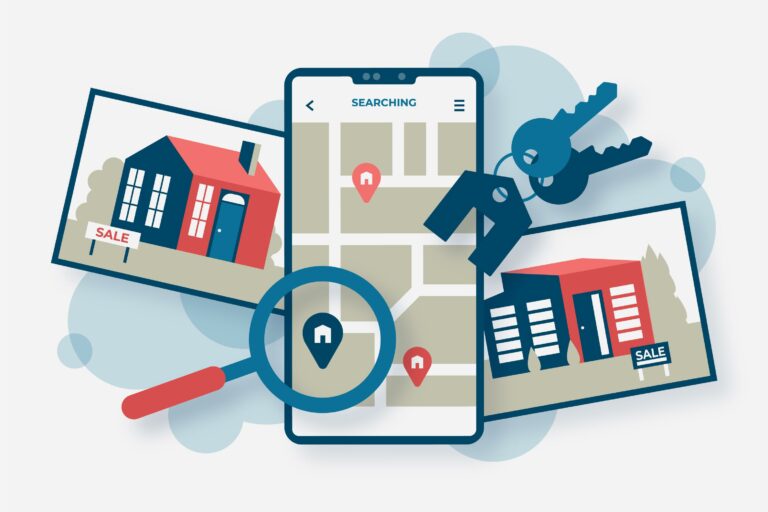The Future of AI-Powered Software: Trends to Watch in 2023
In this comprehensive exploration of the future of AI-powered software in 2023, we dive into the increasing role of AI across industries such as healthcare, education, e-commerce, and manufacturing. We detail the major trends we can expect, including increased personalization, enhanced predictive capabilities, and growth in autonomous AI systems, among others. Additionally, we discuss the symbiotic relationship between AI and Big Data, AI’s impact on cybersecurity, the influence of quantum computing on AI development, and the anticipated demand for AI skills. Despite the challenges, the potential of AI in shaping a smarter, faster, and more personalized future is undoubtedly enormous.
I. Introduction
A. Understanding the Current State of AI-Powered Software
As we embark on our journey into the thrilling landscape of AI-powered software, it’s crucial to establish a solid understanding of the current state of this game-changing technology. Presently, AI is no longer a far-off futuristic concept, but rather a practical tool that is actively driving changes in businesses across the globe. From predictive analytics to personalizing user experiences, AI-powered software is fostering efficiency and providing unprecedented insights into customer behavior, market trends, and operational processes. Yet, this is merely the tip of the iceberg when it comes to the capabilities of AI.
B. The Need to Look Towards the Future
With the current wave of AI advancements, it becomes even more essential to cast our gaze forward. The accelerating pace of innovation means that the AI of today will undoubtedly differ from the AI of tomorrow. Hence, businesses, researchers, and tech enthusiasts must remain forward-looking, ensuring they stay ahead of the curve and leverage the upcoming AI trends for continued growth and success. In this article, we delve into the potential future of AI-powered software and explore the major trends to watch out for in 2023, aiming to equip you with the knowledge to navigate the evolving AI landscape confidently.
II. The Increasing Role of AI in Different Industries
A. AI in Healthcare
AI in healthcare has been nothing short of transformative. By leveraging AI algorithms, we’re now able to predict diseases, design treatment plans, and even create drugs faster than ever before. For example, AI is playing a critical role in analyzing medical images, helping radiologists spot minute abnormalities they might miss. AI is also facilitating remote patient monitoring, allowing physicians to track patients’ health over time and adjust treatments as necessary.
B. AI in Education
AI’s impact on education is equally profound. From personalized learning pathways to administrative efficiency, AI is changing the way education is delivered and received. Intelligent tutoring systems, for example, can adapt to students’ individual learning styles and pace, offering customized instructions and resources. AI can also help educators identify gaps in their teaching or subjects where students are struggling, enabling more effective teaching strategies.
C. AI in E-commerce
AI has revolutionized e-commerce, from personalized product recommendations to advanced customer service chatbots. AI systems can analyze a customer’s browsing history, past purchases, and even abandoned carts to recommend products that align with their preferences. AI chatbots, on the other hand, can handle a wide array of customer inquiries in real-time, offering a level of service that was previously unattainable.
D. AI in Manufacturing
In the realm of manufacturing, AI has ushered in a new era of efficiency and productivity. From predictive maintenance of machinery to enhanced quality control, AI is changing the game. Predictive maintenance can foresee equipment failures before they occur, reducing downtime and saving costs. AI can also analyze complex datasets to spot quality issues early in the production process, ensuring the finished product meets the highest standards.
These examples are just the tip of the iceberg. AI’s role is growing across industries, promising innovative solutions and exciting developments in the years to come.
III. The Evolution of AI-Powered Software: Major Trends
A. Increased Personalization
With the maturation of AI algorithms, we’re seeing an unprecedented level of personalization across digital experiences. This isn’t just about recommending a song you might like on a streaming service; it’s about creating experiences that adapt in real time to the user. These personalized experiences can range from custom-tailored news feeds to personalized learning platforms, and they’re reshaping how we interact with digital technology. This trend is only set to grow, as organizations strive to provide more intimate, relevant interactions for their customers.
B. Enhanced Predictive Capabilities
The predictive capabilities of AI are becoming more powerful and precise. From anticipating user behavior in software applications to predicting the likelihood of machinery failure in a factory, AI’s predictive abilities are driving efficiencies and enhancing decision-making. For instance, businesses are leveraging these predictive capabilities for demand forecasting, helping them to optimize their inventory and reduce costs. As these algorithms continue to learn and improve, their predictive accuracy is only expected to increase.
C. Advances in Natural Language Processing (NLP)
NLP has seen significant advancements recently. With the rise of transformer-based models like GPT-3, machines are getting better at understanding and generating human-like text. This goes beyond simple question-and-answer systems. Machines are now capable of generating whole articles, conducting nuanced conversations, and even writing code. These advancements are redefining human-computer interaction and opening new possibilities for AI-powered software.
D. Growth in Autonomous AI Systems
Autonomous AI systems are becoming more common. These systems can operate with minimal human intervention, making decisions and taking actions based on the data they analyze. From self-driving cars to automated trading systems in finance, these autonomous AI systems are proving to be game-changers. They can operate around the clock, react to situations faster than humans, and they’re constantly learning and improving.
E. The Rise of AI Ethics and Regulations
As AI continues to infiltrate every aspect of our lives, concerns around ethics and regulations are gaining prominence. Issues such as data privacy, algorithmic bias, and job displacement due to automation are leading to a call for clearer rules and ethical guidelines for AI. Many organizations are now investing in AI ethics roles and committees to ensure their AI initiatives are responsible and transparent. The next few years will likely see an increase in regulatory activity and wider discussions about the ethical implications of AI.
These trends represent the cutting edge of AI development. As AI-powered software continues to evolve and mature, these trends are likely to shape the future of the technology.
IV. AI-Powered Software and Big Data
A. The Symbiosis of AI and Big Data
AI and Big Data have a symbiotic relationship, with each technology empowering the other. AI algorithms, for instance, depend on vast volumes of data for training and refining their predictive models. Without Big Data, these algorithms would be unable to learn and adapt over time. Conversely, Big Data’s true potential can only be unlocked when AI algorithms analyze and draw insights from it. Manual analysis is impractical due to the sheer scale and complexity of the data. This symbiosis is a cornerstone of many modern technologies, including AI-powered software.
B. Predictions for AI and Big Data Interactions in 2023
As we look to 2023, the interplay between AI and Big Data is expected to become even more profound. First, we anticipate the rise of more sophisticated algorithms that can learn from less labeled data, or even unlabeled data, reducing the time and effort needed to train AI models. Second, we foresee advancements in data management strategies, including improved data privacy protocols, which will allow for more effective and ethical use of big data. Lastly, with the increasing digitization across industries, the volume and variety of data are set to explode, further fueling the development and application of AI-powered software.
V. AI-Powered Software and Cybersecurity
A. Current State of AI in Cybersecurity
AI is already playing a pivotal role in cybersecurity. AI-powered systems are capable of monitoring and analyzing vast amounts of network data, detecting anomalies that could indicate a cybersecurity threat. Additionally, AI systems can learn from past security incidents, improving their threat detection capabilities over time. In many cases, they can respond to detected threats faster and more effectively than their human counterparts, helping to minimize potential damage.
B. Anticipated Changes in 2023
Looking forward to 2023, we anticipate AI’s role in cybersecurity to deepen. With the rapid expansion of digital landscapes, including the Internet of Things (IoT), and the rising sophistication of cyber threats, AI’s capabilities in threat detection and response will be increasingly vital. We expect advancements in machine learning techniques to allow for even more accurate threat prediction and faster response times. We also anticipate that AI will play a key role in automating routine cybersecurity tasks, freeing up human experts to focus on more complex and strategic cybersecurity initiatives. AI, with its ability to adapt and learn, will be an essential tool in the ever-evolving fight against cyber threats.
VI. Impact of Quantum Computing on AI-Powered Software
A. Understanding Quantum Computing
Quantum computing represents a fundamental shift from classical computing. Unlike classical computers that use bits (0s and 1s) for processing, quantum computers leverage quantum bits, or qubits, which can be both 0 and 1 at the same time. This simultaneous state, known as superposition, allows quantum computers to perform complex calculations far more quickly and efficiently than their classical counterparts. Additionally, quantum computers can process massive amounts of information simultaneously due to another principle called entanglement, which links the state of one qubit to another, no matter the distance between them.
B. Potential Impact of Quantum Computing on AI Development
Quantum computing has the potential to revolutionize AI development. It promises to supercharge machine learning algorithms due to its ability to process vast amounts of data simultaneously, significantly speeding up the training of complex AI models. This could lead to more powerful AI systems capable of tackling problems currently beyond our reach, such as understanding the human genome at a granular level or predicting climate changes with high accuracy. However, the technology is still in its nascent stages, and the full extent of its impact on AI remains a subject of ongoing research and debate.
VII. AI Talent and Skill Demand in 2023
A. Current Talent Landscape in AI
As of now, the talent landscape in AI is marked by a significant demand-supply gap. AI has permeated various industries, creating a high demand for professionals skilled in AI and machine learning. However, the supply of such talent is not keeping pace. The field requires a combination of skills, including data science, programming, and understanding of AI principles, which is currently in short supply. This has led to a ‘war for talent’, with organizations vying for the best minds in AI.
B. Predictions for AI Skill Demand in 2023
Looking forward to 2023, the demand for AI skills shows no sign of abating. As AI technology continues to evolve, and as more industries harness its potential, the need for AI talent will likely skyrocket. The increasing ubiquity of AI-powered software will also drive the demand for professionals who can understand, develop, and manage these systems. Furthermore, as AI becomes more accessible with user-friendly tools and platforms, there will be an increasing need for ‘AI translators’ – professionals who can bridge the gap between technical AI experts and business decision-makers. These trends suggest that investing in AI skills will be crucial for both individuals and organizations in the coming years.
VIII. Conclusion
A. Recap of Key Future Trends
As we look towards the horizon of 2023, the future of AI-powered software is remarkably exciting. AI is continuing to permeate various industries, from healthcare and education to e-commerce and manufacturing, driving efficiency, and innovation. Key trends include increased personalization, enhanced predictive capabilities, advances in natural language processing, growth in autonomous AI systems, and a rising focus on AI ethics and regulations.
Simultaneously, the symbiosis of AI and Big Data, along with the current state and anticipated changes in AI’s role in cybersecurity, points towards a more data-driven and secure future. The potential impact of quantum computing could revolutionize AI development, leading to more powerful and efficient systems. Lastly, the demand for AI talent and skills is projected to escalate, making it a lucrative and highly sought-after career field.
B. Final Thoughts on the Future of AI-Powered Software in 2023
As we gaze into the future, one thing is clear: AI-powered software is poised to become increasingly prevalent, transforming the way we live and work. It is a future characterized by smarter, faster, and more personalized interactions with technology. A future where AI is not merely a tool but an integral part of our daily lives. However, it’s also a future that comes with challenges, including the need for stringent regulations, robust cybersecurity measures, and addressing the talent gap in the AI field.
Despite these challenges, the potential benefits of AI far outweigh the hurdles. As we step into 2023, we are stepping into a future shaped and powered by AI. It’s an exciting time, and we look forward to seeing how these trends unfold and how AI continues to redefine the boundaries of what’s possible.







